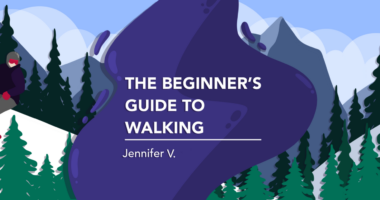The Struggle Is Real: How I Cope With Patient Burnout

In my circle of friends, we often joke that being a rare disease or chronic illness patient is a full-time job. For me, living with not just neuromyelitis optica (NMO), but also several other life-altering diseases that require constant treatment, takes a lot of energy.
I must attend numerous appointments with my team of specialists, which at last count included 25 healthcare professionals. To give you an idea of what having a team this large can look like, there have been times when I have had five different appointments with five different specialists in five different cities five days in a row. For each appointment, I need to arrange transportation, as my care team spans two different health regions.
Every week, I fill my pill boxes with all the meds I need to take at various points throughout the day. Every other day, I refill my insulin pump and change out my infusion set. Once a week, I charge the transmitter of my continuous glucose monitor, which works in tandem with my insulin pump to keep my blood sugar stable. Once it’s charged, I set myself up for another week of wear.
Every other week, a nurse comes to my home to infuse my biologic for NMO, and every month, I go to the hospital for a six-hour intravenous immunoglobulin infusion to replace the immunoglobulins my body can no longer make. (This is the result of a rare side effect of one of the biologics I am on.)
In addition to all that, I constantly need to keep on top of ordering medication and medical supplies and arranging for deliveries, which have to fit into my busy schedule. Every month, a lab tech comes to my home to draw blood for monitoring labs, and I have to arrange for various members of my medical team to get copies of the results.
I have yearly MRIs to monitor my NMO and multigated acquisition scans to make sure my heart is doing OK. (A treatment I was on in the past can damage the heart’s ability to pump properly.)
Meanwhile, I have all the usual life stuff to maintain: cooking, cleaning, grocery shopping, running errands, my extensive advocacy work, volunteering, attending my support group, and making time for the people I love.
Dealing with so much medical stuff day in and day out wears me down. For the most part, I like to think I deal with it gracefully, but every now and again, it feels incredibly overwhelming. It’s like treading water while wearing a 50-pound backpack. Sometimes I can manage it, and sometimes I feel like I’m on the verge of drowning.
In the moments when I feel like I’m going under, what’s really happening is a bad case of patient burnout. When that happens, I know I need to take a break.
Over the years, I’ve realized that while I can never stop doing what’s medically necessary to keep myself alive and in optimal health considering my diagnosis, I can still find ways to carve out space to rest and recalibrate so I don’t drown. This boils down to me switching to “essential services only” for a period of time. Usually this involves two weeks for mild patient burnout and an entire month for moderate to severe cases.
So what does “essential services only” mean? It means I stop doing anything I can safely postpone for the period of time I need to recover. I don’t book any new medical appointments or tests, and if possible, I reschedule anything I have already booked. I don’t attend meetings (in real life or on Zoom), either. I use the time instead to sleep in, read books, make art, and, if I feel up to it, visit with friends or family (under normal circumstances). I may also get my hair cut, have a massage, and just practice major self-care in general during that time.
I’ve found that sometimes I need to be very assertive in guarding this space I’ve carved out for myself. It’s not always easy, and people don’t have to like it. What matters is that I do whatever is necessary to look after myself. It’s not enough for me to merely survive — I need and deserve to thrive. Coming up for air once in a while allows me to do this.
***
Note: Neuromyelitis News is strictly a news and information website about the disease. It does not provide medical advice, diagnosis, or treatment. This content is not intended to be a substitute for professional medical advice, diagnosis, or treatment. Always seek the advice of your physician or other qualified health provider with any questions you may have regarding a medical condition. Never disregard professional medical advice or delay in seeking it because of something you have read on this website. The opinions expressed in this column are not those of Neuromyelitis News or its parent company, Bionews, and are intended to spark discussion about issues pertaining to neuromyelitis optica spectrum disorder.






Leave a comment
Fill in the required fields to post. Your email address will not be published.